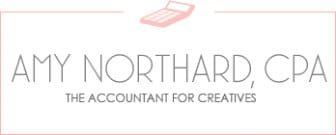Here in the United States, we have a pay-as-you-go federal tax system, which means you have to pay your income taxes throughout the year as you earn your money.
If you’re a small business owner, this usually means you make quarterly estimated tax payments to the IRS. But if your estimations are off, you may end up with penalties. In today’s article, I’ll explain how you can use safe harbor rules to avoid these underpayment penalties.
What does safe harbor mean?
In the case of underpayment penalties, the IRS provides some safe harbor provisions, or rules, that provide some protection against these penalties. This means that if you follow the safe harbor rules, you may be able to avoid paying a penalty even if you end up owing more taxes than you originally thought.
These safe harbor rules can be a relief for taxpayers who are doing their best to estimate their tax liability but who may make mistakes or have unexpected changes in their financial situation.
What are underpayment penalties?
Underpayment penalties are imposed by the IRS when you owe more taxes than you have paid throughout the year. If you owe less than $1,000 in taxes after subtracting your withholding and refundable credits, then you will not be charged a penalty.
However, if you don’t pay enough tax through withholding or estimated tax payments and you wind up owing more than $1,000 in taxes, you may owe a penalty on the amount you underpaid.
The amount of the underpayment penalty is based on the amount you owe and how long it takes you to pay it. The underpayment interest rate also varies from year to year and sometimes from quarter to quarter. In 2023, the quarterly interest rate for both corporate and non-corporate businesses is 7%. You can use Form 2210, Underpayment of Estimated Tax by Individuals, Estates, and Trusts to determine if you owe an underpayment penalty.
How can I use safe harbor to avoid an underpayment penalty?
To avoid an underpayment penalty, you must pay at least 90% of the tax you owe for the current year or 100% of the tax you owed the previous year– whichever is smaller. This is known as the “safe harbor” rule. For example, if you owe $10,000 in taxes for the current year, you must pay at least $9,000 throughout the year to avoid the penalty. If you owed $8,000 in taxes the previous year, you must pay at least $8,000 throughout the year to avoid the penalty.
Another important aspect of the safe harbor rule is the timing of your payments. To avoid the underpayment penalty, you must make estimated tax payments by the due dates of each quarter. The due dates are April 15, June 15, September 15, and January 15. Luckily, if you miss a payment, you may still be able to avoid the penalty if you make up the payment by the following quarter.
Are there other ways to avoid an underpayment penalty?
The IRS likes to receive four equal estimated tax payments throughout the year, but if your business brings in revenue unevenly over the course of the year, you can use the annualized installment method to avoid or lower the penalty. You can complete Schedule AI of Form 2210, Underpayment of Estimated Tax by Individuals, Estates, and Trusts to calculate your payments based upon the annualized installment method.
Additionally, there are two other circumstances where the IRS can waive an underpayment penalty:
- You experienced a casualty event, disaster, or other unusual circumstance that caused you to miss a tax payment.
- You retired (after age 62) or became disabled during the tax year causing an underpayment that the IRS determines was “due to reasonable cause and not willful neglect.”
Are there exceptions to the safe harbor rule?
There are also some exceptions to the safe harbor rule. For example, if you are a farmer or fisherman, you may be able to avoid the penalty if you pay at least two-thirds of your tax liability for the year. Certain household employees and certain high-income earners also have special rules.
Does the safe harbor rule include interest?
It’s important to note that while the safe harbor rule provides some protection against penalties, it does not provide protection against interest. If you owe taxes and don’t pay them by the due date, you will still owe interest on the amount you owe, even if you are protected by the safe harbor rule. The interest rate is set by the IRS and can change each quarter.
How can I qualify for the safe harbor rule?
You do not need to do anything special to qualify for safe harbor. However, to help ensure that you will qualify for the safe harbor rule, it’s a good idea to keep track of your estimated tax payments throughout the year.
You can use my free quarterly tax payment calculator or complete Form 1040-ES, Estimated Tax for Individuals to estimate your tax liability and calculate your estimated tax payments. If you are new to paying quarterly estimated taxes, it may also be a good idea to consult with a tax professional to help you with your calculations.
Be sure to read or watch some of my other helpful posts and videos related to this topic:

